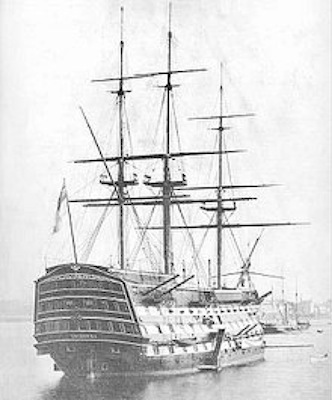COCKPITS


The name "Cockpit Country" has its origins in the Maroon Wars, when a population of Maroons was able to force the British into signing a peace treaty on March 1st in the civil year 1738 / 39. (i.e,. that was March 12th 1739 using the current Gregorian calendar -- that was a Thursday!). As we see in the Third Article of the Treaty, reference is made to land lying between Trelawney Town (which is near present-day Maroon Town) and the Cockpits.
At that time (the early eighteenth century), the term "cockpit" was in nautical use, denoting an area in the aft lower deck of a man-of-war where the wounded were taken. Like all lower-deck spaces, it was confined, humid, and badly lit. During a battle, it was also noisy, stinking and bloody. All this reminded people of a real cock-pit, hence the name.
If you visit Cockpit Country today, what will strike you, as you hike through the hills, is the 100% humidity and the sweat which quickly soaks your clothing. What will not strike you is the shape of the cockpits: that's hidden from you by the trees.
Now, imagine the British soldiers in their nice, woolen uniforms during the Maroon Wars, being bombarded by boulders that the Maroons dislodged from upslope as the British marched through the limestone saddle-corridors which connect one hilltop to another. And realizing that there is no surface water in karst limestone, so when you're thirsty-to-the-point-of-despair, your options are to drink the water from tank bromeliads (with all the great mosquito and crab larvae, as well as frog tadpoles and frog poo) or drink your own pee! R.C. Dallas' 1803 descriptions of the Second Maroon War are vivid and will ring true for anyone who has hiked the Cockpits! Remember also that these soldiers had been transported to Jamaica by the Royal Navy, so they were well-familiar with the wooden battleships and indeed the cockpit.
As history records, the Maroon style of guerilla warfare completely outclassed the British soldiers in this terrain and, for these soldiers, the dark, confined, humid sinks were places of blood and death:- so that the soldiers use of the term cockpits and the derivation thereof is pretty obvious!
And you can now see how the word "cockpits" came to be used in yachts and then in aircraft.
The name for the area remained as the "Cockpits", both on maps and in written texts into the late 19th century. The geologist James G. Sawkins is often attributed with providing the name Cockpit Country for the first recorded time in-print, in his 1866 / 1869 detailed account of Jamaica's geology. But this attribution is incorrect in that he didn't use a capital c for "country" (i.e, he didn't write this in the format of a proper noun). Instead, he used the word "country" in its dictionary definition format: an area or region with regards to its physical features.
What we see is that Sawkins wrote about the "western Cockpit land, that is, a rough uncultivated track of country" and the "windward Cockpits" from The Alps stretching eastwards to the Trelawny / St. Ann parish border. He actually gave his first description as he approached the headwaters of the Martha Brae:
“This valley is more undulating than that of Fontabelle, descending from the north by four distinct depressions before reaching the river in front of Windsor Pen Great House. It is here the Cockpit country commences; and from the difficulties presented by the uneven surfaces . . .”
Again, we have to pay attention and emphasize -- Sawkins did not use a capital "c" for country. He was still describing a country of Cockpits.
Where we see the earliest usage of "Cockpit Country" as a proper name is on maps in the very late 1800s. For example, in the pamphlet Jamaica in 1895, A handbook of information for intending settlers and others., the accompanying map includes a label "Cockpit Country" positioned near Accompong while the written narrative text continues to refer to “Cockpit district” (pg 2) and “the inaccessible Cockpits” (pg 3).
Between 1895 - 1905, map makers toggled between "Cockpit Country" and "Wild Cockpit Land", but after 1905 they all seemed to settle on calling it Cockpit Country. Thus, the finalized name "Cockpit Country" is really just due to map makers copying each other, then shifting the label to fill the blank space on their maps!
Sweeting (1958) also, unfortunately, misled generations of geologists by suggesting that "cockpits" were "So called for their resemblance to the arenas for cockfighting." That this is wrong is clearly demonstrated by Lyew-Ayee's definition (2006) of cockpits as "irregular, star-shaped hollows". Who ever saw a star-shaped cockfighting arena?
Sweeting's assertion was also queried at the time (ref.: Lewis & Sweeting 1959): "Judge the surprise of those of us not unfamiliar with limestone country, but ignorant of Jamaica, when the air photographs of the Cockpit Country included in the paper portray almost exclusively round topped hills with hardly a semblance of enclosed rounded hollows - or cockpits in the normally understood sense."